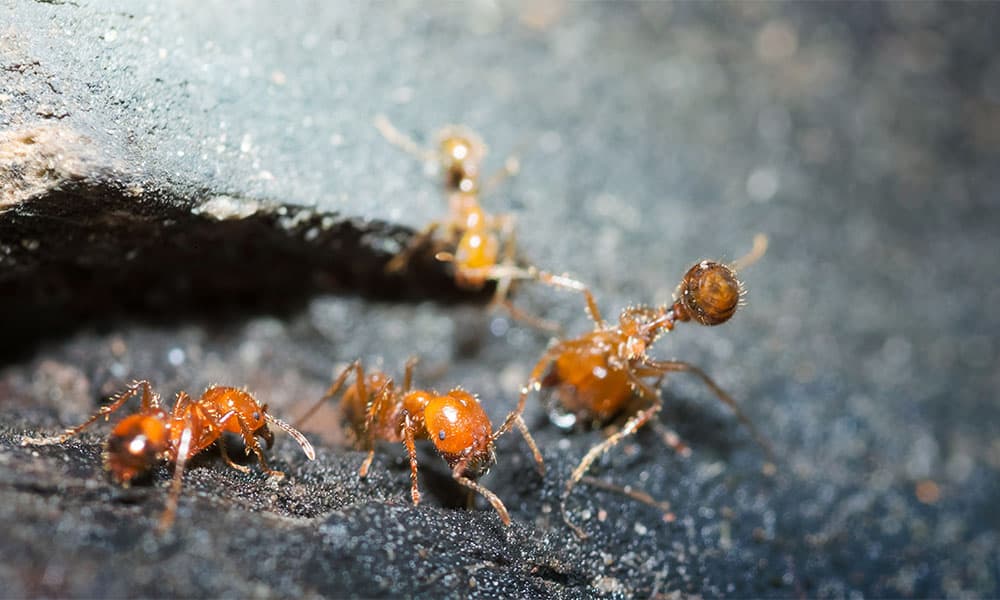Thief Ant Facts & Information
Thief ants, named for their habit of invading and stealing food from other ant colonies, can become a significant pest issue in homes and commercial spaces. Their small size and elusive behavior make them particularly challenging to detect and manage.

Solenopsis Molesta
What You Need To Know About Thief Ants
What do thief ants look like?
Thief ants are small ants, typically measuring about 1/16 to 1/8 inch in length. They are yellow to light brown and have a relatively smooth, shiny exoskeleton. Their body is slender with a distinctive two-segmented waist and large, rounded eyes.
What do thief ants eat?
Thief ants are omnivorous and have a diverse diet. They feed on a variety of substances including sweets, proteins, and fats. They are particularly attracted to greasy and sugary foods, and they scavenge for food scraps and dead insects.
What sort of habitat do thief ants live in?
Thief ants prefer warm, indoor environments. They commonly nest in and around buildings, especially in areas with food sources and moisture. They build their nests in locations such as wall voids, under floors, in insulation, and within decaying wood.
How do thief ants commonly behave?
Thief ants are known for their stealthy behavior, which is reflected in their name. They are highly social and live in large colonies with numerous workers. They are adept at foraging for food and can create extensive trails to locate and exploit food sources. Their behavior includes sneaking into other ant colonies to steal larvae and pupae, which they bring back to their own nests.
Did you know this about thief ants?
Thief ants are named for their behavior of raiding other ant colonies to steal brood (larvae and pupae). This unique behavior allows them to supplement their own colony’s food supply and bolster their population. They are also known for their small size and elusive nature, which makes them challenging to detect and control. Thief ants can be persistent pests in households and commercial settings due to their ability to exploit food sources and establish colonies in hard-to-reach places.
Understanding Thief Ant Infestations
Understanding thief ant infestations is crucial for effective control. Thief ants are tiny, yellow to light brown ants that often invade homes in search of food and moisture. They are known for their ability to form large colonies and are frequently found in cracks, crevices, and areas with high humidity. Their behavior includes raiding other ant nests, which can complicate control efforts.

How Hearts Handles Thief Ant Treatment
Hearts Pest Management employs an integrated pest management approach to handle Thief Ant infestations.
Thief Ant Inspection
Thief Ant Treatment
Thief Ant Prevention
Educational Resources

Think You Might Have a Thief Ant Infestation?
At Hearts Pest Control, we understand the challenges associated with Thief Ant infestations and are here to provide professional solutions tailored to your needs. Flourishing in warm and humid climates, they are prevalent in many regions, including San Diego County, Orange County, and Los Angeles County.